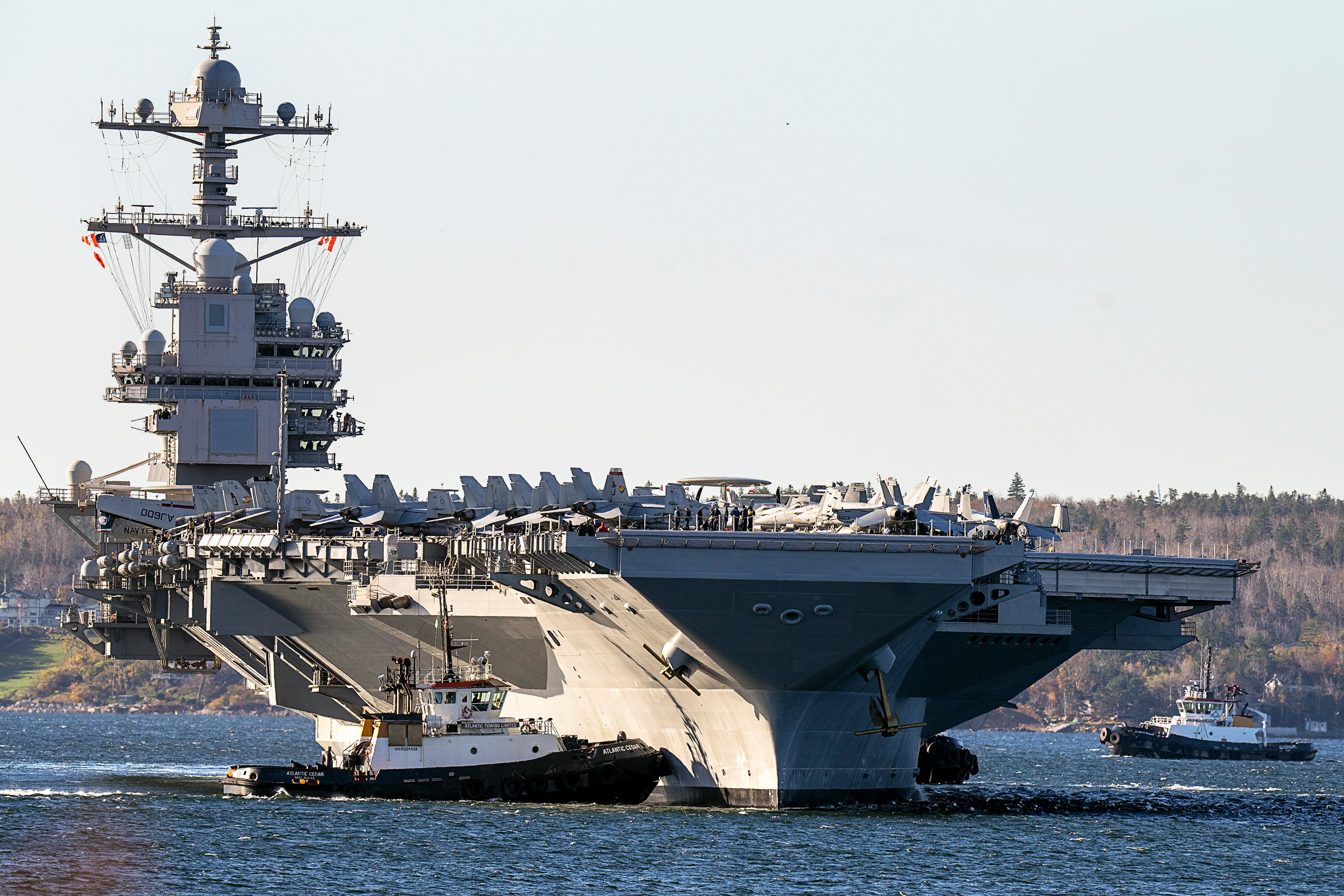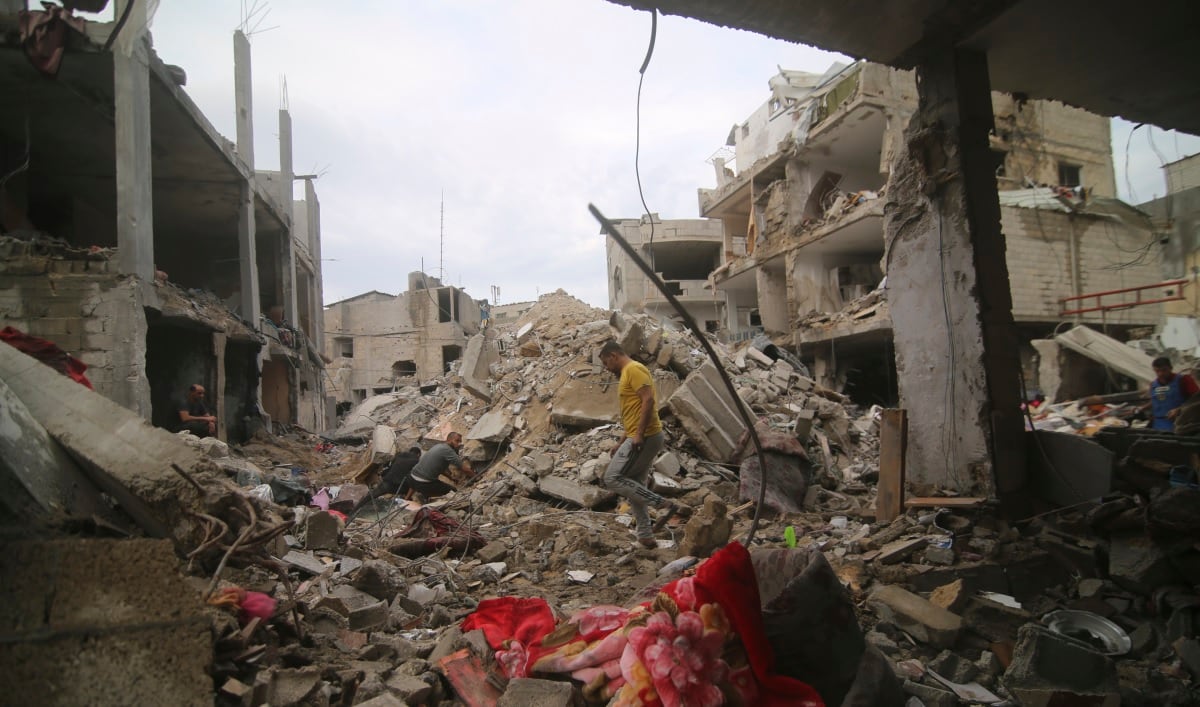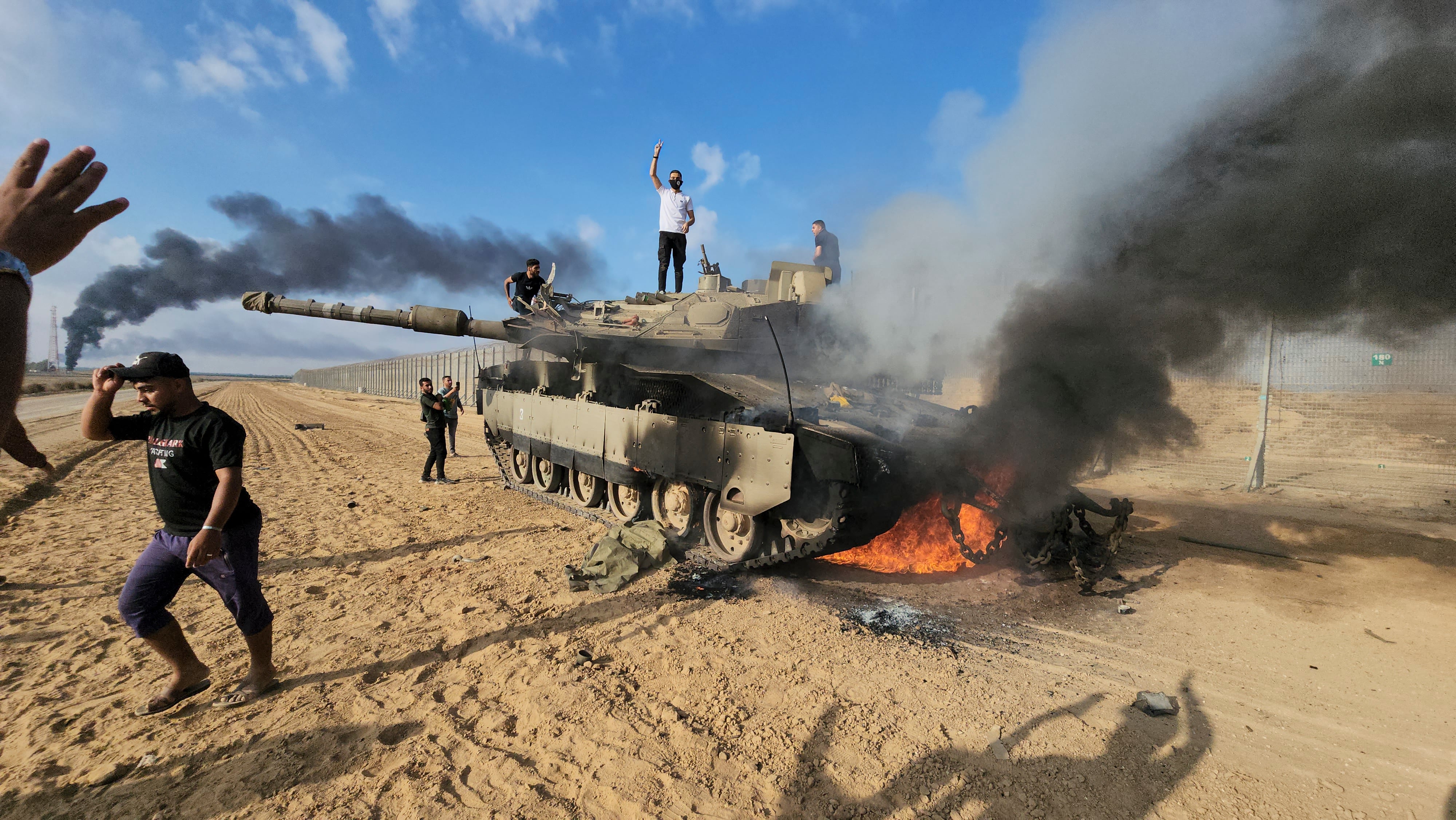Last fall, the White House’s National Security Strategy made clear that a reduced role for the U.S. military in the Middle East was in store.
De-escalation, partnerships and an avoidance of “grand designs” would guide military and diplomatic policy as the Pentagon continued its years-long pivot toward countering China and continuing the West’s proxy war against Russia in Ukraine, moves that inevitably require pulling military resources from elsewhere.
But defense analysts say the U.S. may face challenges in extracting American forces from the region in the wake of Saturday’s unprecedented attack inside Israel by the Palestinian militant group Hamas. Following the attack, Israel has vowed to invade and seize the restive Gaza Strip from the Iranian-backed militants.
Meanwhile, Pentagon officials say U.S. Navy and Air Force assets are being buttressed in the region to dissuade Iran or other regional actors from further aiding Hamas, which has been designated a terrorist organization by the U.S. and European Union.
So, while U.S. officials may want to put conflict in the Middle East behind them, as laid out in last year’s national security strategy, analysts say the realities there render such an aspiration easier said than done.
“In terms of the Middle East, it’s hard as we try to make the famous pivot to the Pacific, events have a way of pulling us back in,” retired Adm. James Stavridis, a former NATO supreme allied commander in Europe, told Military Times.
Stavridis added that while Israel has far more firepower than Hamas, the conflict is at risk of turning into a broader regional war if the organization’s backers in Iran seek to enter the fray.
A senior Hamas official denied reports that Iranian security officials planned the attack or gave the go-ahead during a meeting in Beirut last week, The Associated Press reported Monday.
RELATED

“The Biden administration had hoped to cut back on global commitments in order to focus on the Pacific,” said Mark Cancian, a retired Marine Corps colonel and current senior advisor with the Center for Strategic and International Studies’ international security program.
“However, Russia, Hamas, and Iran have different ideas,” he added. “The enemy gets a vote.”
Just a day after Saturday’s attack by Hamas, which killed hundreds of Israelis and at least nine U.S. citizens, leading to retaliatory attacks that have killed hundreds of Palestinians, U.S. military posture in the region is already evolving to deter a broader conflict.
Defense Secretary Lloyd Austin announced Sunday that the Gerald R. Ford carrier strike group, which has been on station in the Mediterranean Sea this year to deter Russia, will now pull double deterrence duty and steam to the eastern end of the Mediterranean near Israel and Gaza.
RELATED

Austin also announced that Air Force fighter squadrons in the region would be augmented, and that the department would be sending munitions and additional resources to the Israeli military, a longtime ally.
A senior defense official who was granted anonymity to speak candidly said Monday that any regional adversary “should think twice” before entering the fray.
Ford’s aircraft will be conducting operations in the region and will be ready to “respond to any contingencies and minimize the risk of a widespread conflict that would threaten stability,” according to the official.
“These posture increases were intended to serve as an unequivocal demonstration in deed, and not only in word, of U.S. support for Israel’s defense, and serve as a deterrent signal to Iran, Lebanese Hezbollah and any other proxies across the region who might be considering exploiting the current situation to escalate conflict,” the official added.
Developments in recent days follow news this year that Marines would soon embed on merchant ships in the economically vital Straits of Hormuz, a move meant to deter a rash of attacks and seizures of ships by Iranian forces and another nod to the idea that the U.S. military must still play an active role in the Middle East.
This summer, a Navy amphibious ready group arrived in CENTCOM waters to deter such attacks, with the command alleging that Iran has attacked or seized about 20 merchant vessels since 2021.
The U.S. military’s presence in the Middle East ebbed in recent years following the conclusions of large scale operations in Iraq and Afghanistan — and the carrier-based air support those boots on the ground required.
While at least one carrier was always on station in the Middle Eastern waters of U.S. Central Command during those wars, a carrier has not operated in that combatant command’s territory since the summer of 2021, when the war in Afghanistan ended.
Navy aircraft carriers have long been critical to providing a presence in the region, as Ford is slated to do, but the fleet continues to suffer readiness issues and finite numbers, said Mackenzie Eaglen, a senior fellow at the American Enterprise Institute think tank who focuses on defense issues and military readiness.
“Leaders may desire to restore a more regular carrier presence to the region after this weekend’s war against Israel, but it is not cost-free,” Eaglen said. “As the carrier fleet shrinks over the next decade to somewhere between nine and 10 on any given day depending on schedules, presence will be increasingly a zero-sum proposition.”
While Israel’s war with Hamas will undoubtedly shift some U.S. attention back to the Middle East, Cancian said he suspects the fighting there “is likely to be over in a few weeks.”
“Dominating the longer term, however, will be Iran, which clearly had a major role here,” he said. “Countering Iran will take attention and forces.”
Geoff is the managing editor of Military Times, but he still loves writing stories. He covered Iraq and Afghanistan extensively and was a reporter at the Chicago Tribune. He welcomes any and all kinds of tips at geoffz@militarytimes.com.




